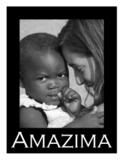 Africa breaks my heart --- that’s the simplest and most persistent emotion that bursts out of such recent films as “Hotel Rwanda,” “The Constant Gardener,” “The Last King of Scotland,” and, now, “Blood Diamond,” the best and most enjoyable of these movies set against the background of civil wars, ethnic conflict, and Western meddling and exploitation.
Africa breaks my heart --- that’s the simplest and most persistent emotion that bursts out of such recent films as “Hotel Rwanda,” “The Constant Gardener,” “The Last King of Scotland,” and, now, “Blood Diamond,” the best and most enjoyable of these movies set against the background of civil wars, ethnic conflict, and Western meddling and exploitation.Blood Diamond takes place in civil war-torn Sierra Leone in the 1990s, its story centered on a fisherman whose life is uprooted when his village is invaded by the the Revolutionary United Front (RUF) and his wife and children are taken from him. Solomon (the fisherman) is captured and turned into a slave trolling for gems in the river. He finds a rare and priceless huge pink diamond and buries it nearby, but not before being spotted by the amiably vicious leader of the R.U.F.
Solomon Vandy played by Djimon Hounsou who has tremendous presence and depth, gives a powerful performance and keeps the movie’s moral sense firmly in place. Danny Archer played by Leonardo DiCaprio plays his finest role yet in an impressive career. He plays a white Rhodesian (Zimbabwe) by birth and a former mercenary in Angola ... and he wants the diamond. In the capital city of Freetown, Maddy Bowen played by Jennifer Connelly, a magazine reporter, cozies up to Archer trying to get the story of how the smuggling racket works. Solomon, Danny, and Maddy all want something, and they take turns using, helping, and half trusting one another to get it, stumbling in and out of war zones as young killers (whose ranks eventually include Solomon's son Dia) rampage through the towns firing AK-47s from the backs of pickup trucks. The story's full horror comes through when Solomon's 12-year-old son Dia played by Caruso Kuypers is kidnapped by them and brainwashed into being a child soldier. This bright boy and good son changes into a zombie, and his transformation stands in for all the horrors that war is.
Every time a valuable natural resource has been discovered in Africa—whether it’s ivory, gold, or diamonds—white Europeans have hired surrogates to plunder the goods, and the Africans have suffered terribly.
Though the scenes of flying bullets and widespread carnage are shattering (especially at the hands of children), the violence - in the course of a real-life war - is organic and necessary. The varied African landscape is depicted with breathtaking beauty.
Add to this the African Children's Choir, http://www.africanchildrenschoir.com/ a strong presence whose mission we all need to be in support of. Made up of the most precious of faces and the most delicate of voices, the choir is comprised of young African children aged between 7 and 11. Many of them have lost a parent or two to famine and disease, some are HIV positive orphans. They speak different languages and are from various countries around the continent, but they have united in one voice to represent and raise awareness to the issues concerning AIDS orphans from all over Africa.
A moving piece of music ..."Nangirira" is sung by this choir in the final moments of the film. They also did a few other sounds and music throughout the film and during some noticeable moments at the beginning.











No comments:
Post a Comment